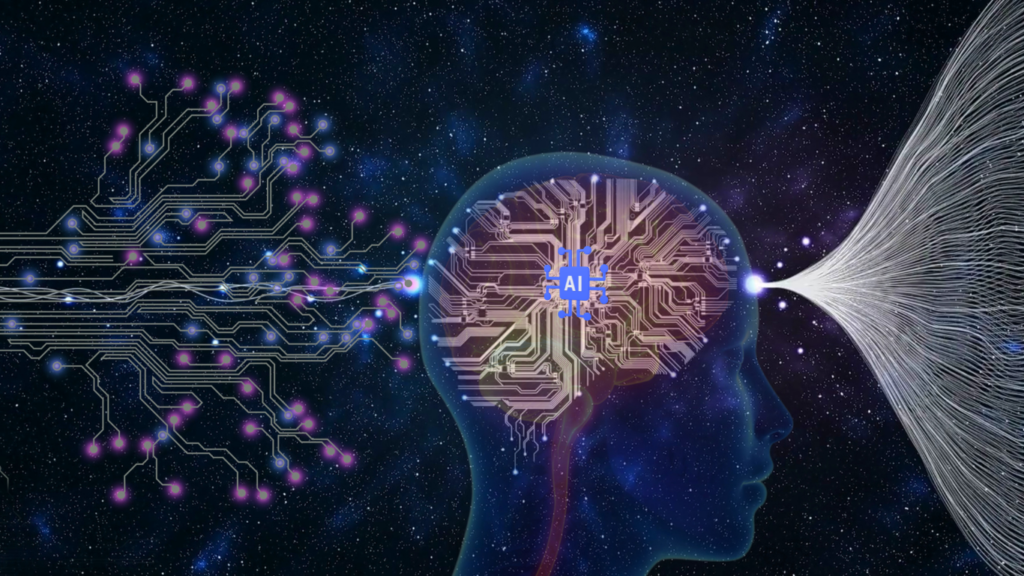Understanding Blockchain Technology
Blockchain, a decentralized digital ledger, records transactions across multiple computers in real-time. Unlike traditional databases, blockchain ensures data integrity through cryptographic hashing. Each record, or “block,” links to the previous one, forming a “chain.” This structure makes fraudulent alterations nearly impossible without controlling over 50% of the network.
Key Features of Blockchain
- Decentralization: Blockchain operates on a peer-to-peer network, eliminating the need for central authority. For example, Bitcoin transactions occur without a central bank.
- Transparency: All participants can view transactions, increasing trust and accountability. Public blockchains like Ethereum provide complete transparency.
- Security: Advanced cryptographic techniques safeguard transactions from tampering. Hash functions and public-private key cryptography ensure secure data exchange.
- Immutability: Once recorded, transactions can’t be easily altered. This feature helps in auditing and verifying historical data.
- Consensus Mechanisms: Blockchain uses various algorithms to validate transactions. Proof of Work (PoW) and Proof of Stake (PoS) are two common mechanisms.
Benefits of Blockchain Technology
- Efficiency: Blockchain reduces the need for intermediaries, streamlining processes. For instance, cross-border payments become faster and cheaper.
- Cost Reduction: By eliminating middlemen, blockchain lowers transaction fees and administrative costs.
- Data Integrity: The immutability feature ensures data is consistent and trustworthy. Industries like healthcare use blockchain for secure data storage.
- Increased Trust: Transparent and secure systems enhance user confidence. Digital identities on blockchain provide verifiable credentials.
- Finance: Blockchain enables decentralized finance (DeFi) and cryptocurrency transactions. These systems offer alternative financial services without traditional banks.
- Supply Chain: It enhances traceability, ensuring product authenticity. Walmart uses blockchain to track food sources, improving safety measures.
- Healthcare: Blockchain protects patient data and improves interoperability between systems. MedicalChain offers secure health record solutions.
- Real Estate: It simplifies property transactions with verifiable records. Companies like Propy use blockchain for property sales and transfers.
Understanding blockchain technology, with its unique features and broad applications, highlights its potential impact. By leveraging blockchain’s strengths, industries can achieve greater transparency, security, and efficiency.
Recent Innovations in Blockchain

Several technological advancements have revolutionized the blockchain landscape. Notable among these are smart contracts, decentralized finance (DeFi), and non-fungible tokens (NFTs). These innovations are redefining how we interact with digital systems.
Smart Contracts
Smart contracts are self-executing contracts where the terms are directly written into code. These operate on blockchain networks, ensuring transparency and immutability. For example, Ethereum’s platform supports smart contracts, enabling automation in various industries, such as real estate and legal sectors. Coupled with decentralized applications (dApps), smart contracts can streamline processes, enhance efficiency, and reduce costs.
Decentralized Finance (DeFi)
Decentralized finance (DeFi) uses blockchain technology to recreate traditional financial systems in a decentralized manner. Major platforms like Uniswap and Aave operate without intermediaries, offering services such as lending, borrowing, and trading. DeFi protocols leverage smart contracts for transparency and security, providing users control over their financial assets. For instance, a user can lend crypto assets on Compound to earn interest, bypassing traditional banks.
Non-Fungible Tokens (NFTs)
Non-fungible tokens (NFTs) are unique digital assets stored on blockchain platforms. Unlike cryptocurrencies, NFTs represent ownership of digital items and are indivisible. Platforms like OpenSea and Rarible have popularized NFTs, enabling creators to tokenize digital art, music, or virtual real estate. NFTs use blockchain’s immutability to guarantee authenticity and ownership, revolutionizing the digital content ecosystem.
These recent innovations solidify blockchain’s role in transforming various sectors by ensuring security, transparency, and efficiency.
Adoption Across Different Industries
Blockchain technology is revolutionizing various sectors by enhancing transparency, security, and efficiency. Its decentralized nature has led to widespread adoption and numerous use cases across different industries.
Finance and Banking
The finance and banking sector benefits from blockchain through streamlined processes and enhanced security. Blockchain supports faster cross-border transactions by eliminating intermediaries. For example, platforms like Ripple facilitate almost instantaneous transfers. Smart contracts automate and enforce agreements, reducing the need for manual verification. Decentralized finance (DeFi) platforms offer decentralized lending and borrowing solutions, providing greater accessibility and transparency for financial services.
Supply Chain Management
In supply chain management, blockchain ensures traceability and transparency. Tracking products from production to delivery is seamless. IBM’s Food Trust blockchain network, for example, enables tracking food items from farm to table, ensuring safety and authenticity. Real-time data sharing among stakeholders reduces delays and discrepancies, improving efficiency and trust in the supply chain.
Healthcare
The healthcare sector uses blockchain to secure patient data and improve interoperability. Blockchain enables secure sharing of medical records among authorized parties, ensuring privacy and data integrity. For instance, Guardtime’s blockchain platform secures patient data in Estonia’s eHealth system. Blockchain supports tracking pharmaceuticals to prevent counterfeiting, ensuring the authenticity and safety of medical products.
Challenges and Considerations
Despite its numerous benefits, blockchain technology faces several challenges and considerations. Understanding these is vital for anyone looking to implement or invest in blockchain solutions.
Scalability Issues
Blockchain struggles with scalability due to its architecture. Bitcoin, for example, processes around seven transactions per second, while Visa handles approximately 24,000. This disparity highlights blockchain’s inherent limitations. Strategies like sharding and the Lightning Network aim to address this, though they are still under development or scrutiny.
Regulatory Landscape
Regulations surrounding blockchain are inconsistent and evolving. Different countries and regions have varying stances, making global implementation tricky. For instance, the European Union has introduced the General Data Protection Regulation (GDPR), which poses challenges for blockchain’s immutable nature. Staying compliant while leveraging blockchain’s advantages requires careful navigation of these regulations.
Security Concerns
While blockchain is generally secure, it is not impervious to attacks. Issues like the 51% attack, where a majority can control the network, and smart contract vulnerabilities, can compromise security. Additionally, human errors or malicious insiders can lead to significant breaches. Ongoing advancements in cryptographic techniques and security protocols aim to mitigate these risks.
Future Trends in Blockchain
Blockchain is evolving rapidly, and several key trends indicate its future trajectory. Understanding these trends can provide valuable insights into the technology’s potential and its likely impact on various industries.
Interoperability Solutions
Blockchain networks need to communicate with each other to expand their utility. Interoperability solutions are being developed to facilitate seamless interaction between different blockchains. Projects like Polkadot and Cosmos are leading the way, making it easier to transfer assets and data across multiple platforms.
Enhanced Scalability
Scalability continues to be a primary focus. New consensus algorithms like Proof of Stake (PoS) and Layer 2 solutions like Optimistic Rollups aim to increase transaction throughput. Ethereum 2.0’s shift to PoS and Bitcoin’s Lightning Network are examples enhancing scalability within their ecosystems.
Regulatory Compliance
Regulatory compliance is crucial for broader blockchain adoption. Efforts are underway to create frameworks that balance innovation with legal requirements. The development of GDPR-compliant blockchains and the increasing scrutiny from financial regulators highlight the importance of meeting regulatory standards.
Integration of AI and IoT
Combining blockchain with Artificial Intelligence (AI) and the Internet of Things (IoT) can unlock new possibilities. Smart contracts can automate processes in IoT devices, while AI can analyze data collected on the blockchain for insights. This integration is seen in sectors like supply chain management and healthcare for real-time, automated, and secure transactions.
Decentralized Finance (DeFi) Growth
DeFi is poised for continued growth. Innovations in DeFi include more complex financial instruments and services, automated market makers (AMMs), and decentralized autonomous organizations (DAOs). These offer new ways to trade, lend, and invest without intermediaries.
Privacy-Enhancing Technologies
Privacy mechanisms are essential for sensitive data handling on blockchains. Solutions like zk-SNARKs (Zero-Knowledge Succinct Non-Interactive Arguments of Knowledge) and Confidential Transactions aim to provide higher privacy levels. These technologies are critical for sectors requiring stringent privacy, like healthcare and finance.





